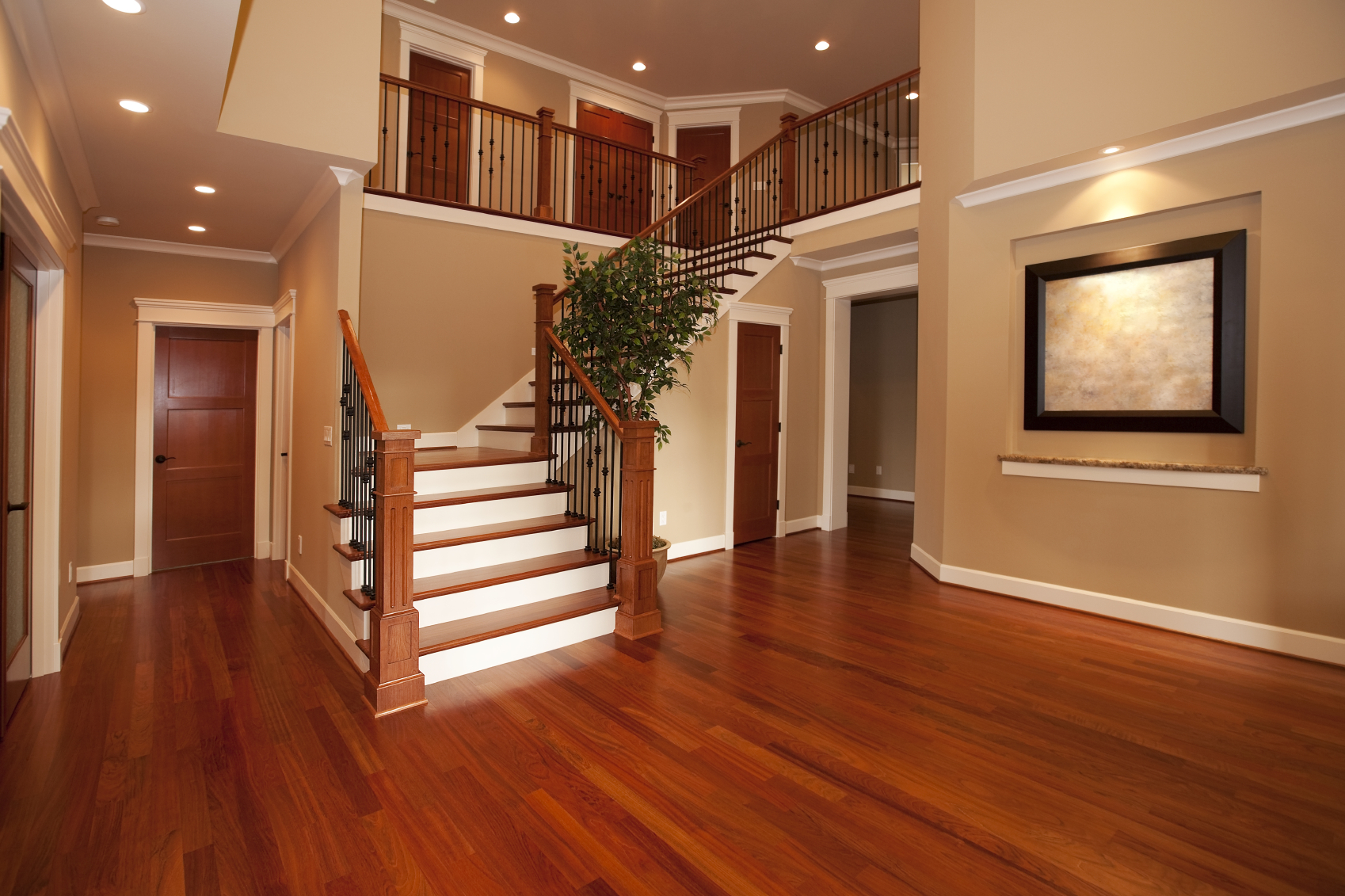Imagine stepping into a home, a symphony of textures and tones dancing before your eyes. The living room, bathed in warm sunlight, boasts a rich honey-colored hardwood floor, welcoming you with its comforting charm. In contrast, the kitchen, bustling with life, features a cool, charcoal-grey wood floor, exuding a sense of modern sophistication. This is the magic of incorporating different color wood floors within the same house, a design choice that speaks volumes about individuality and artistic vision.

Image: homesfeed.com
Beyond the initial “wow” factor, mixing different colored wood floors can be a strategic move to seamlessly blend diverse spaces while creating a sense of flow throughout the home. This approach, while bold, can be achieved with thoughtful planning and a keen eye for detail. This article delves into the intricacies of this design technique, exploring the advantages, considerations, and inspiring ideas to help you create a home that reflects your unique style.
A Design Choice With Depth and Character
Using different color wood floors isn’t about haphazardly throwing contrasting colors together; it’s about a deliberate selection that showcases the personality of each space. Each color possesses its own unique mood and character, impacting the overall ambiance of the room.
-
Light, warm woods: Think golden oak, maple, or cherry. These hues evoke feelings of warmth, coziness, and spaciousness. They tend to work well in spaces where natural light is abundant, like living rooms or bedrooms.
-
Medium, neutral woods: From walnut to hickory, these colors offer a balanced and timeless appeal. They provide a sense of solidity and sophistication, making them suitable for both formal and informal spaces.
-
Dark, cool woods: Ebony, jatoba, or walnut can create a dramatic, sophisticated ambiance. These darker tones work wonders in defining areas, adding a touch of mystery and elegance, ideal for dining rooms, libraries, or home offices.
Advantages of Integrating Diverse Color Floors
The allure of mixed color wood floors goes beyond aesthetics. This design approach offers a multitude of advantages, making it a popular choice for modern homes:
-
Enhanced Visual Appeal: Introduce contrasts and depth, adding visual interest to your space. This approach can make your home feel more dynamic and engaging, preventing monotony.
-
Spatial Definitions: Highlight different areas within your home – a kitchen, dining area, or living space – by using distinct floor colors to create a sense of separation. This trick is especially useful in open floor plans, where the integration of diverse colors avoids visual clutter and defines specific functions.
-
Style Expression: Embrace your individuality by selecting wood floor colors that reflect your personal style and preferences. Whether you prefer a rustic farmhouse aesthetic or a minimalist modern vibe, different wood floor colors can become a powerful tool for achieving your desired aesthetic.
Navigating Color Choices and Considerations
As with any design approach, incorporating different colored wood floors requires careful planning and thoughtful execution.
-
Color Harmony: While contrasts are welcome, ensure the colors you choose complement each other, creating a cohesive and harmonious design. Consider using color palettes that flow seamlessly – think warm browns, cool greys, or muted blues – to ensure a balanced and calming environment.
-
Wood Species: The wood species you choose directly impacts the color and grain pattern. For instance, oak provides a classic, warm look, while walnut offers a dramatic, darker hue. Research different wood species and their inherent properties to ensure the colors integrate seamlessly.
-
Finishes: Staining or sanding can significantly influence the final color of your wood floors. Seek professional advice or explore online resources to determine the best finish for each color.

Image: www.rocktherm.com
Design Inspiration: Real-World Examples
To truly grasp the potential of mixed color wood floors, let’s explore some real-world examples:
-
Transitional Spaces: In a contemporary open-plan home, a warm, light-colored wood floor in the living area might transition to a cooler, deeper hue in the kitchen or dining space. This gradual color shift creates a sense of flow while defining each area’s purpose.
-
Accenting Areas: A playful approach involves using a contrasting floor color to accentuate a specific area, like a reading nook or a home office, creating a cozy retreat within your home’s main flow.
-
Creating Interest in Large Spaces: In expansive living spaces, consider using two complementary wood colors to divide the area into distinct zones, creating a sense of depth and visual interest within the larger expanse.
-
Adding Visual Depth & Dimension: A unique approach involves using wood flooring of subtle color variations to add depth and dimension, particularly in rooms with limited natural light. These subtle shifts in color can create the illusion of larger spaces and more complex design elements.
Expert Tips for Success
For a truly successful and impactful outcome, consider these expert tips:
-
Balance is Key: While contrasting colors add visual excitement, keep the color balance in mind. Avoid overdoing the contrasts, ensuring that all colors work together for a harmonious and aesthetically pleasing result.
-
Professional Consultation: Don’t hesitate to seek professional guidance from interior designers or flooring specialists. Their expertise will help you select the right colors, wood species, and finishes for a flawless integration of your flooring choices.
-
Consider Your Lifestyle: Factor in your daily life and household dynamics. If you have children or pets, avoid overly light colors with a focus on durability and ease of maintenance.
Different Color Wood Floors In Same House
Conclusion
Incorporating different color wood floors in the same house is a design approach that offers a fascinating blend of style and practicality. It allows you to express your personality through color while creating a sense of flow and visual interest throughout your home. From enhancing visual appeal to defining specific spaces, the advantages of this design choice are numerous. Remember to prioritize thoughtful planning, consider color harmony, and seek professional advice to achieve optimal results. Embrace the power of color and let your home become a canvas of unique and vibrant style!





